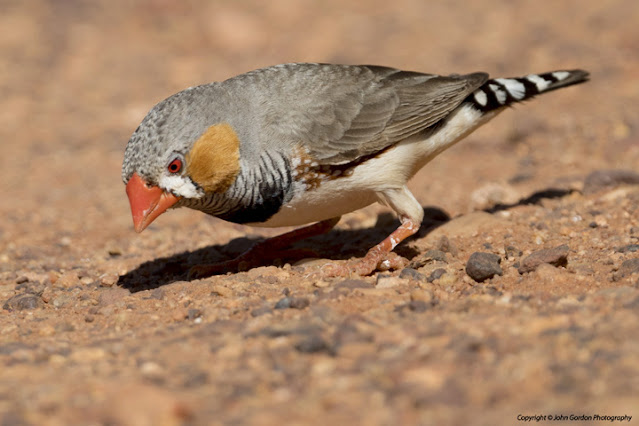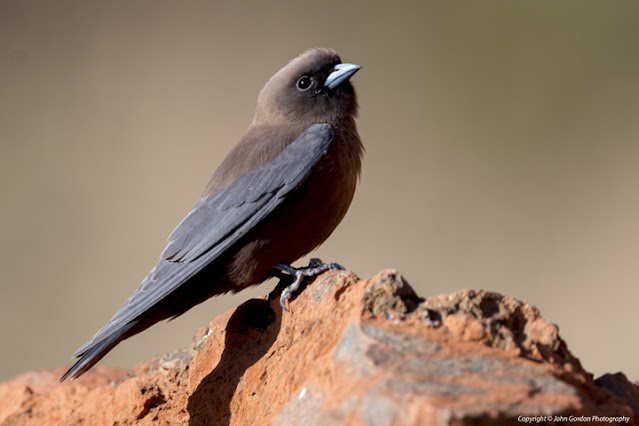Uluru, Olgas and the Red Centre
After completing a long drive from Cairns to Brisbane, my partner Sandee and I were excited to visit the iconic desert landscape of Australia's Red Centre. We knew that a trip to Australia wouldn't be complete without visiting Uluru (Ayer's Rock), a World Heritage site and one of the world's largest monoliths.
 |
| Crested Pigeons. |
 |
| Spinifex. |
Spinifex is a plant that binds the desert together. The clumps of grass provide refuge for small animals including birds, rodents, lizards and snakes. Termites chew on the stems depositing a fine mulch and nutrients underground. When processed, the plant provides a bitumen like glue substance, used by aboriginal people for making and mending tools.
Uluru's rock paintings easily damage as they have no binding agents. The cave paintings depict religious and ceremonial expression, teaching and storytelling. These include geometric symbols such as concentric circles, figures representing animal tracks and the outlines of animals.
 |
| Rock Paintings Uluru. |
Aboriginal people have lived in the area for at least ten to twenty thousand years, perhaps longer. The first white explorers arrived one hundred and twenty years ago. Today the Anangu people are caretakers of the land and share responsibility for the site with the Australian government.
On the third morning I persuaded Sandee to accompany me on nine km base walk of Uluru. It was an unforgettable experience on so many levels. The sun, the gentle breeze, the light hitting the sandstone rock face. At one stop a steady trickle of water filled a pool shaded by trees. A Willy Wagtail was hawking insects at the waters edge.
While walking, we saw a flock of White-browed Babblers and a Brown Falcon flying overhead. We also encountered several flocks of Zebra Finches, Little Woodswallows, Black-faced Cuckoo-shrikes and White-plumed Honeyeaters.
 |
| Zebra Finch. |
 |
| There were many interesting formations where photography was allowed. |
We saw Little Woodswallow nests clinging to steep walls and a Nankeen Kestrel surveyed its domain from a cave.
 |
| Nankeen Kestrel nesting on a cliff face. |
 |
| Little Woodswallow. |
As we walked around Uluru, we discovered many surprising things about the area. The nine-kilometre base walk was open to the public, except for a particular stretch called Tjukatjapi, which is sacred to the Anangu people. Photography was prohibited in this area.
There were desert oak around the base offering much needed shelter for trekkers and wildlife.
 |
| Base Walk scenery. |
 |
| Yellow-throated Minor |
 |
| The Olgas. Desert Oaks dot the landscape. |
We woke up at 4:30 a.m. every morning to catch the shuttle bus out to either Uluru or the Olgas. One day, I went on a six-hour self-guided tour through the Valley of the Winds. The walk turned-up several lifers, including Diamond Dove, Hooded Robin, Splendid Fairywren, Singing Honeyeater, Australian Pipit, Red-capped Robin, Dusky Grasswren, and Red-backed Kingfisher.
 |
| Splendid Fairywren |
Finally...but not least
Late afternoons, we would rest before heading out again for the sunset at Uluru. Each sunset was different, but the third night was the most magical. As we drove out to Uluru, menacing rainclouds began to develop, followed by thunder. Without the sun, Uluru had lost its reddish colour and now appeared to be a deep brown. Our bus driver had told us we might be in for a rare light show if the rains stopped. The rain did stop, and a partial rainbow appeared. As the sun set and for the briefest of moments, a shaft of the sunlight lit up Uluru, creating a magic moment that we and all those present will never forget.
Our next stop will be the lush old growth at O'Reilly's Rainforest Retreat and Lamington National Park. The contrast wouldn't be greater.
"It's never too late to make a plan"
John Gordon
Langley/Cloverdale
BC Canada
.





Hello John, Amzing to see the difference of birds and landscape on the other side of our Earth. Great photos.
ReplyDeleteRegards,
Roos